Chapter 8 Crime Scene Management Introduction to Criminal
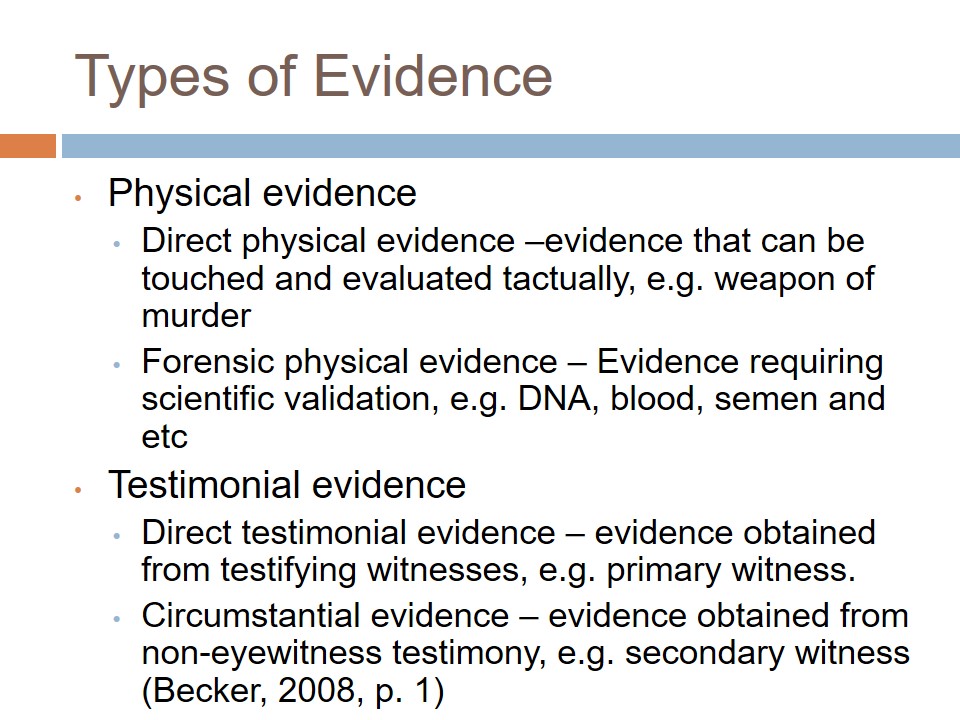
Evidences in Criminal Investigation Significance and Importance 805
By Dr. Larry Jetmore. The first installment of this series on investigating the crime of rape discussed legal definitions, the importance of care in handling the initial contact with a rape victim and the goals for searching the crime scene. I pointed out successful prosecution of the crime often hinges on associative evidence collaborating a rape occurred and linking a suspect to the scene.
Different Types of Physical Evidence PMI Evidence Tracker
In forensic investigation hair is the most important trace evidence, which is commonly found on the scene of the crime. With increasing crime and knowledge of various evidence type and their investigation method being spread to even a common man (population) through the advent of internet and various documentary movies in the past 5 to 6 years.
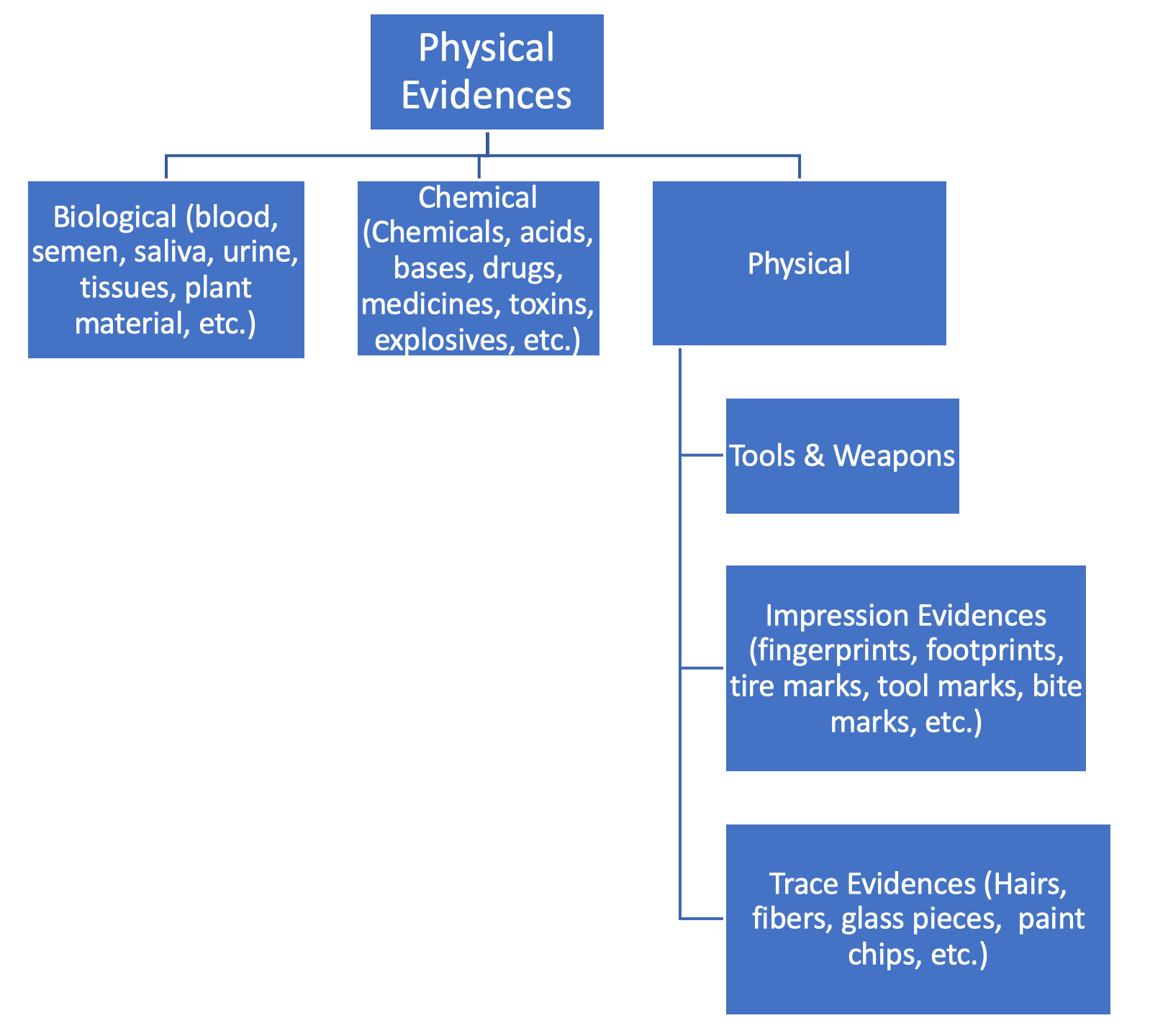
All About Forensic & Investigative Sciences Physical Evidences in
Physical Evidence A successful crime investigation depends upon the collection and analysis of various kinds of evidence . Forensic scientists classify evidence in different ways and have specific ways of dealing with it. One major distinction is between physical and biological evidence. Physical evidence refers to any item that comes from a nonliving origin, while biological evidence always.

Criminal Investigation The Process Of Gathering Evidence Ecusocmin
A fire in a methamphetamine lab devastates an apartment building. A car accident claims the life of a driver during her trip home. These are all potential crime scenes. By conducting a systematic examination of these areas, crime scene investigators uncover the physical evidence to help identify what happened and who was involved.

Criminal Procedure General Information Bracelaw Criminal Lawyers
evidence. Physical evidence cannot be wrong; it cannot perjure itself; it cannot be wholly absent. Only its interpretation can err. Only human failure to find it, study and understand it, can diminish its value. Kirk, Paul, Crime investigation, John Wiley & Sons Canada, Limited, 1953 UNITED NATIONS PUBLICATION Sales No. E.09.IV.5 ISBN 978-92-1.
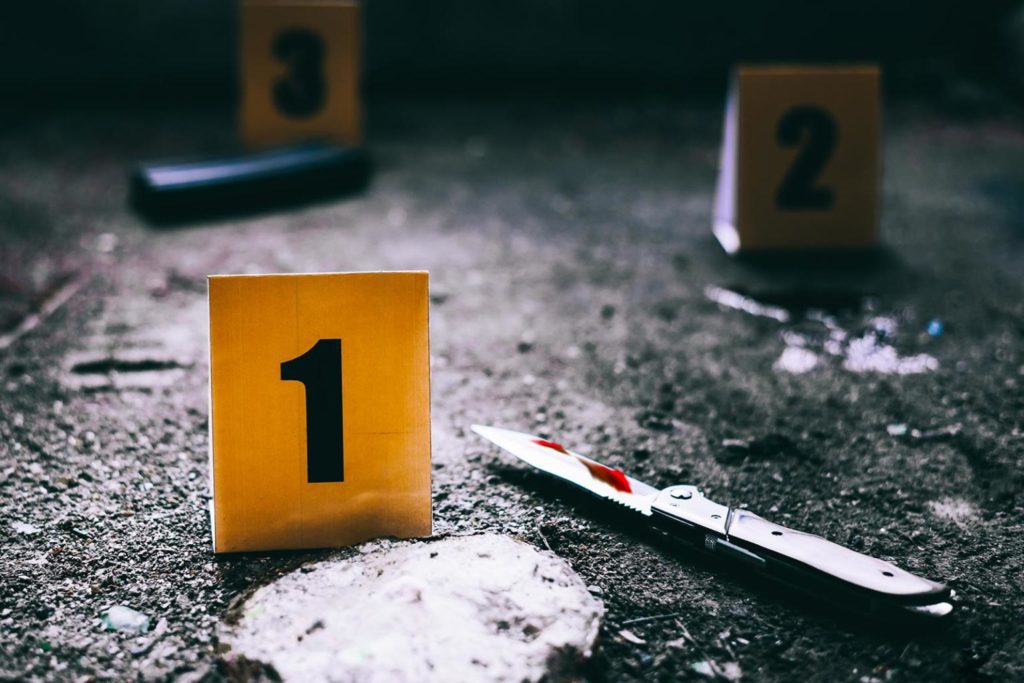
Criminal Investigations for New Detectives Evidence and Collection
Guiding Principles for Crime Scene Investigation and Reconstruction Guiding Principles for Crime Scene Investigation. Crime scenes can present a wide variety of physical, biological, chemical, and situational hazards. identification and collection of important evidence or mislead the investigator. c) However, as with forensic laboratory.

Crime scene investigation collecting evidence . CSI Academy of Florida
The major objective of physical evidence examination is to provide useful information for the criminal investigator to investigate cases. It is the intersection of these objectives of crime scene investigations and the examination of forensic evidence that defines a proper scientific crime scene investigation.

What Is The Importance Of Forensic Science In Criminal Investigation by
Forensic examination of the physical evidence provides the investigative aids by linking culprit, victim, and other elements with crime, establishing the sequence of the events. In other words, the physical or trace evidence contributes to the reconstruction of the crime scene as well as offers associative evidence (Stoney and Stoney 2015.
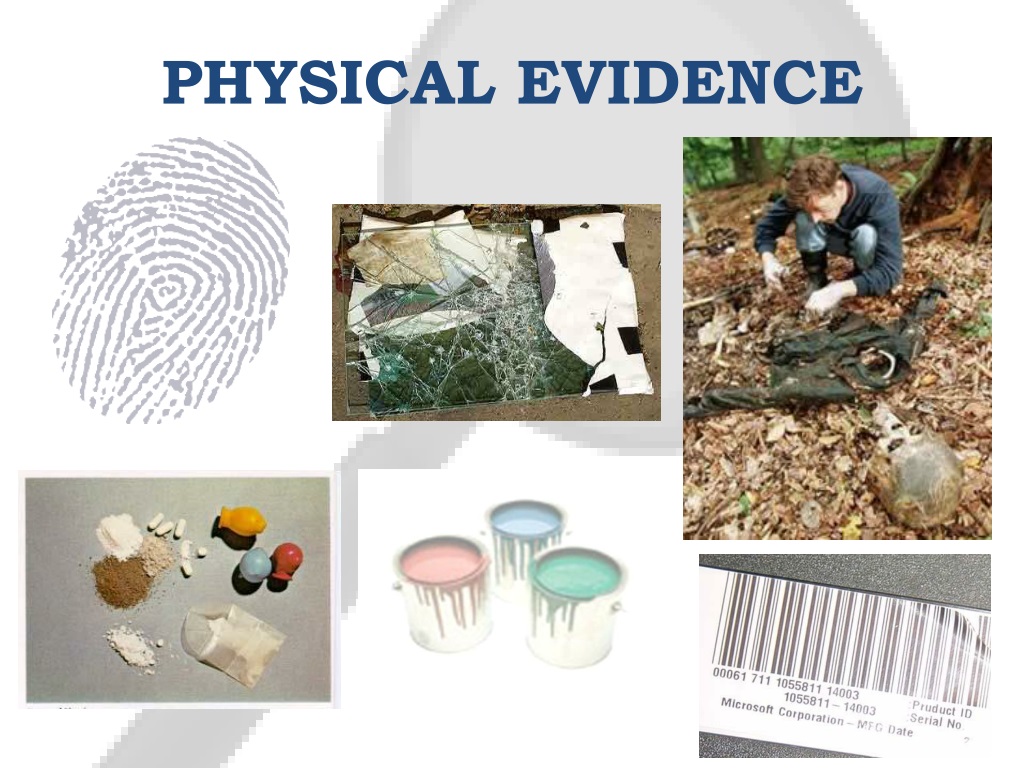
PPT PHYSICAL EVIDENCE PowerPoint Presentation, free download ID9299479
Forensic science applies natural and physical scientific methods during an investigation process for solving crimes. Equipment is used to analyze an array of evidence to tie a criminal to a crime and victim. A forensic scientist will examine physical evidence gathered at the crime scene, such as DNA, blood, clothing fibers, tire tracks, firearm.

What are three evidence reconstruction classifications? Crime Scene
Abstract. Type of physical evidence at crime scenes include transient, pattern, conditional, transfer, and associative evidence. The introductory chapter on forensic science describes areas of specialization including criminalistics. Aspects of the crime scene search discussed here include AIDS and other biohazards, sequence of operations, and.
.jpg)
Chapter 3 Physical Evidence ppt download
Recalling the lack of scholarly literature on investigation noted earlier, Rossmo first proposes to outline the anatomy of a criminal investigation: the underlying structure of an investigation, its main purposes and objectives, and, by the same token, why it can fail (e.g., failure to solve the crime; miscarriage of justice).
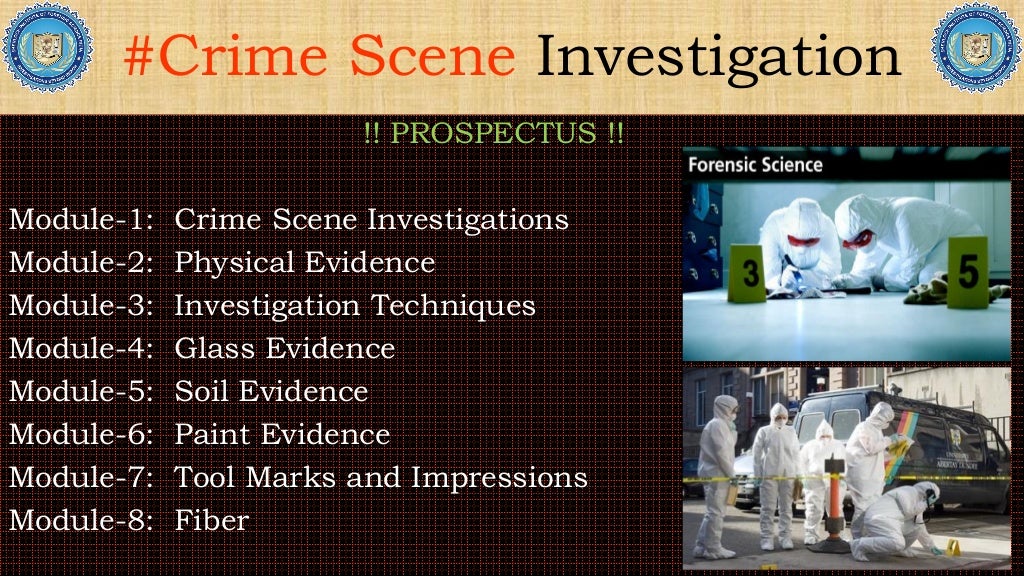
IMPORTANCE OF CRIME SCENE COLLECTION & PRESERVATION OF EVIDENCE
The three physical evidence strategies are built on the foundation of Locard's Principle of Exchange, which states that 'every contact leaves a trace'. They are: These three strategies are intricately interwoven and investigating officers should keep the objectives and outcomes of all three areas in mind when developing, reviewing and.
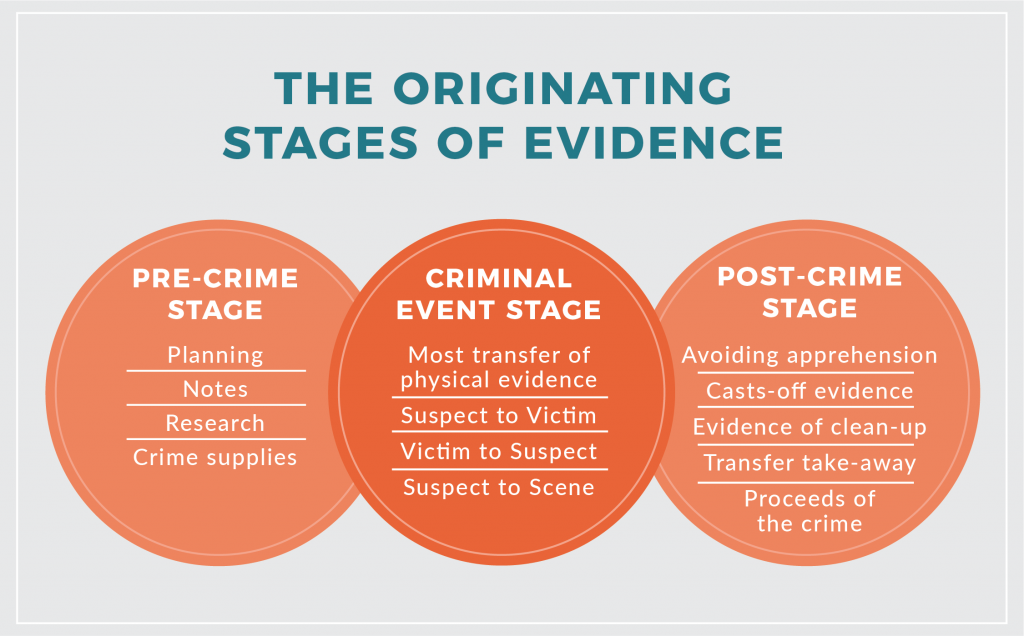
Chapter 8 Crime Scene Management Introduction to Criminal
Importance and Role of Physical Evidences in Forensic Science. N. Mubarik. Published 2019. Law. Forensic Science has seen tremendous transition through the ages and has emerged as an undetectable and integral part of the criminal justice system. There has been more and more dependence on this field and has led to the successful conviction of in.
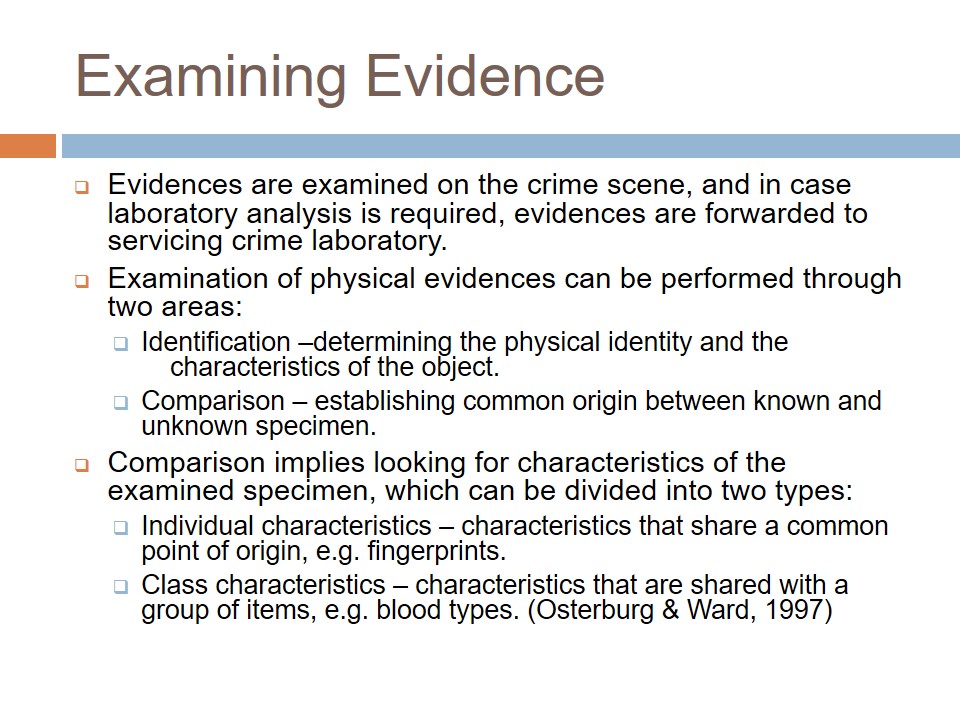
Evidences in Criminal Investigation Significance and Importance 805
Samples That May be Collected at a Crime Scene. A wide variety of physical evidence can be collected at a scene that is deemed valuable ("probative") for collection and investigation: biological evidence (e.g., blood, body fluids, hair and other tissues) latent print evidence (e.g., fingerprints, palm prints, foot prints)

Types of Evidences Considered in a Court of Law DKH Legacy Trust
Scientific crime scene investigation is a process that not only includes the above mechanical aspects of scene security, crime scene documentation, and physical evidence collection and preservation, but also demands and expects more dynamic approaches such as scene survey, scene analysis, development of hypotheses through the linkage of the scene, physical evidence and persons, and the.
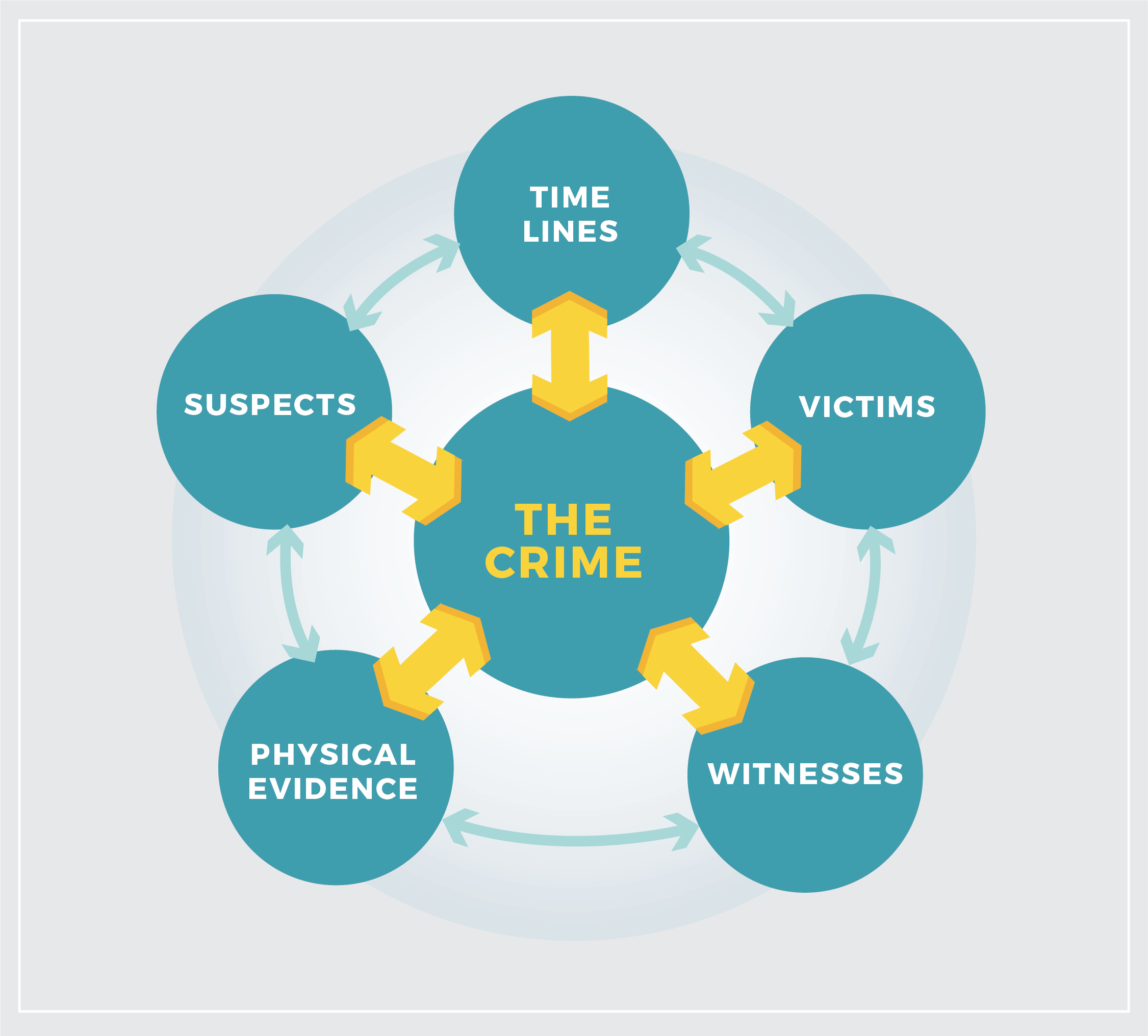
TheCrime Introduction to Criminal Investigation Processes
Abstract. Physical evidence is useful (1) to determine how a crime was committed, (2) to connect a suspect with the crime or identify the criminal, or (3) to clear an innocent person. The use of fingerprints is shown to be crucial in identifying an offender, and footprints are reported to have been useful in establishing the line of entry and.